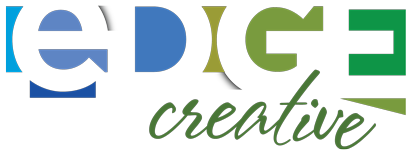An accessible website complies with legislation and gets better results on Google and most importantly, is available to everyone
ABOUt WEbsite ACCESSIBILITY
Whether you’re a blogger, eCommerce merchant or have a business website you want to make sure that your content is useful and reachable for anyone who wants to visit your pages. And you want to be sure your site maintains compliance with Canada’s accessibility laws.
CANADIAN LEGISLATION
- Federal Legislation
The Accessible Canada Act, Bill C-81
On June 20, 2018, the Government of Canada introduced Bill C-81, An Act to ensure a barrier-free Canada in Parliament. The Accessible Canada Act received Royal Assent on June 21, 2019, and came into force on July 11, 2019. This act was proposed by the Minister of Science and Sport and Persons with Disabilities in 2018. The purpose is to provide guidance for website developers and designers and promote inclusion for citizens and residents with disabilities.The act basically follows the same requirements as the international web standards, Web Content Accessibility Guidelines (WCAG 2.2 AA). Penalties for failure to meet and maintain these guidelines could result in fines up to $250,000.
- British Columbia Legislation
The Accessibility British Columbia Act, Bill M 219
In 2014, the Government of British Columbia announced its Accessibility 2024 plan. Included in the plan is the objective to make internet access in B.C. the most accessible in Canada. The BC Government has committed to ensuring its website and online content meet the international web standards, Web Content Accessibility Guidelines (WCAG 2.2 AA). In June 2021, the Accessible B.C. Act became law.
- Ontario Legislation
Accessibility for Ontarians with Disabilities Act (AODA)
As part of this act, Ontario business owners with more than 50 employees, whether private or non-profit, schools, and organisations in the public sector must either create or refresh website content to meet WCAG 2.2 Level A – AA guidelines by January 1, 2021. Content is defined as any text, images, video, or sound. Non-compliance in any of the above instances will result in fines ranging from $200 to $15,000 dollars, depending on the website ownership/environment and severity of the non-compliance.
- Manitoba Legislation
Accessibility for Manitobans Act (AMA)
The AMA was passed by the province in 2013 to ensure the same type of protections and access as the Ontario legislation. It is built upon five sets of standards that require website creators, publishers, and business to provide accessibility to disabled Manitobans. These include the size of print, colour contrast, and language usage that are in-step with the AODA and WCAG.
- Nova Scotia Legislation
Nova Scotia Accessibility Act
This act was passed into law in 2017, but portions of it are still under development. Nova Scotia is taking a “lead by example” approach by making all government websites compliant with WCAG standards. They differ from other provinces by applying a timetable for compliance that’s dependent upon the requirements of each of the 12 WCAG standards. The penalty for failure to comply is a fine that could reach as high as $250,000.
INTERNATIONAL WEB CONTENT ACCESSIBILITY STANDARDS
- Web Content Accessibility Guidelines (WCAG)
Web Content Accessibility Guidelines
US LEGISLATION
- Section 508 requires that websites follow WCAG 2.2 guidelines.
Section 508 of the Rehabilitation Act (29 U.S.C. § 794d)
- Americans with Disabilities Act (ADA)
ADA
Search Engine Optimization
Google is committed to making the world a better place for people with disabilities. They have made it clear: websites that give users a better experience will rank higher in search results. An accessible site gets better results in a Google search.
We can audit your site and recommend ways to meet the WCAG 2.2 Level AA requirements.
The good news is that making your website accessible may not require a complete rebuild. We can provide you with an accessibility audit and remediation recommendations.
